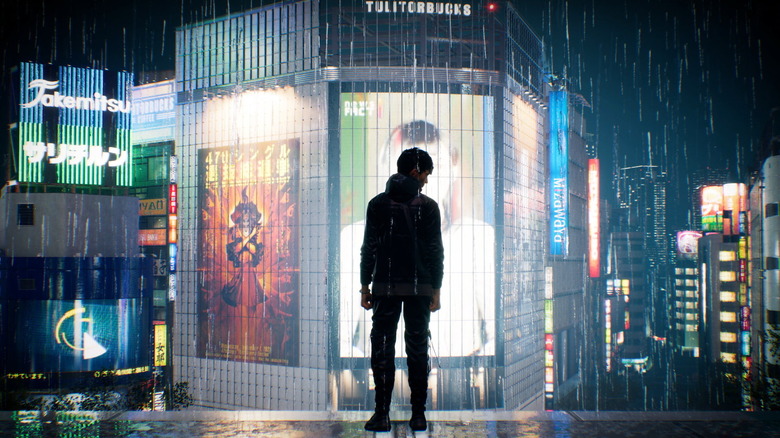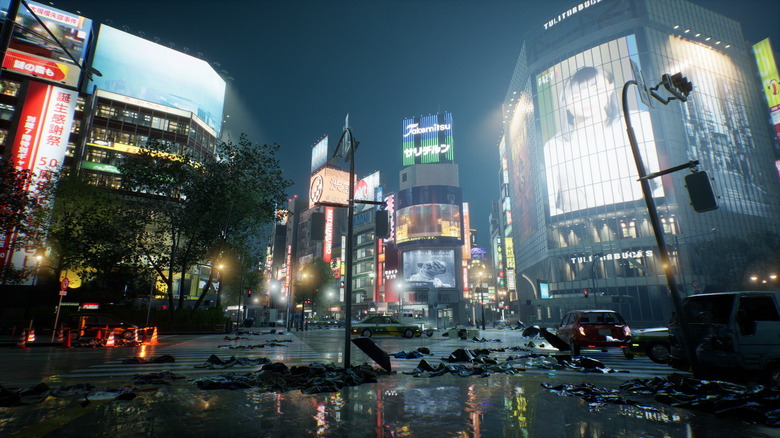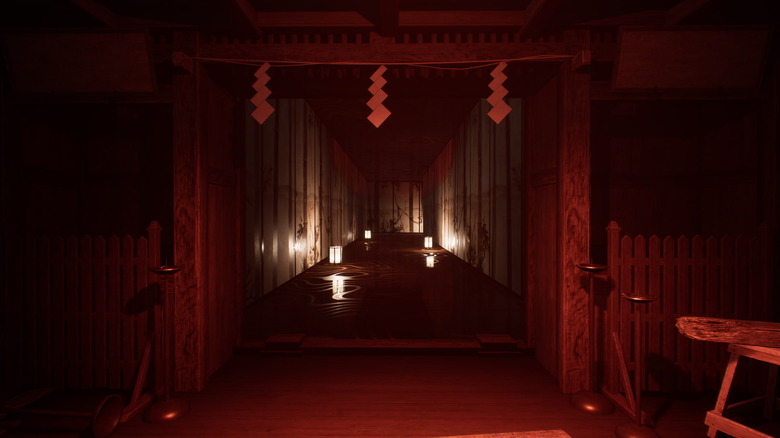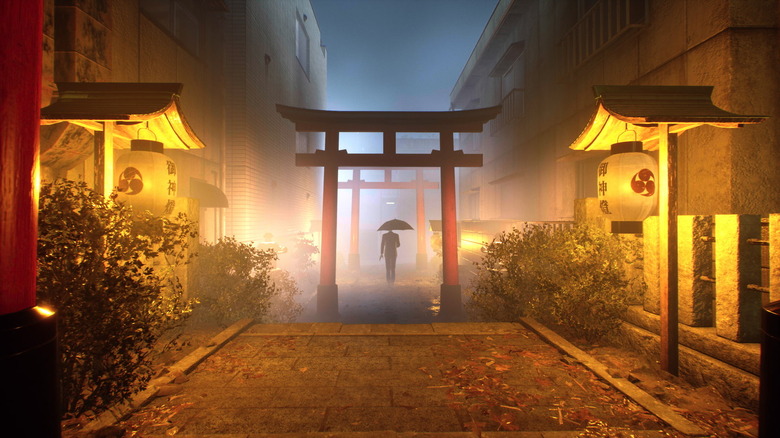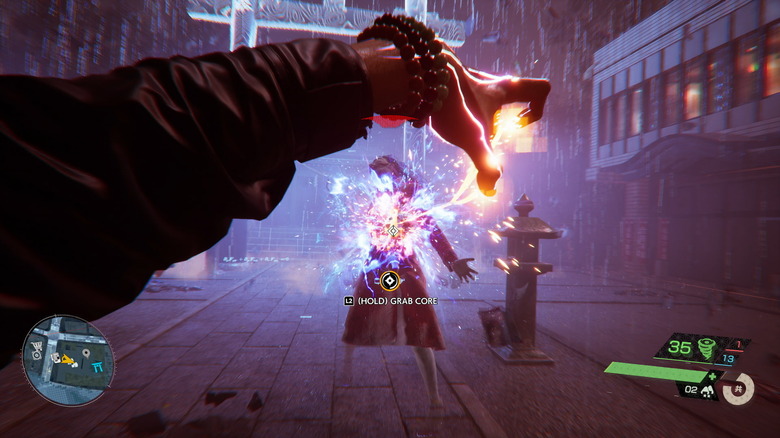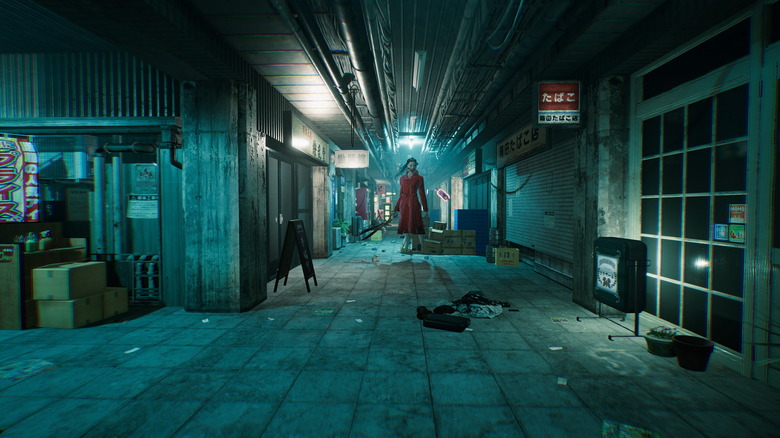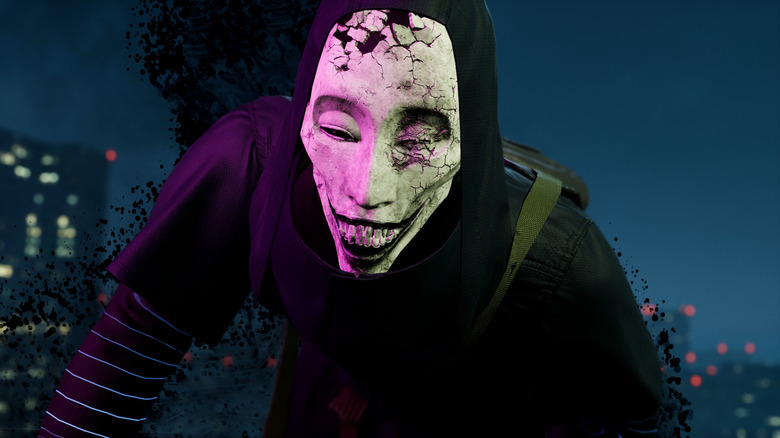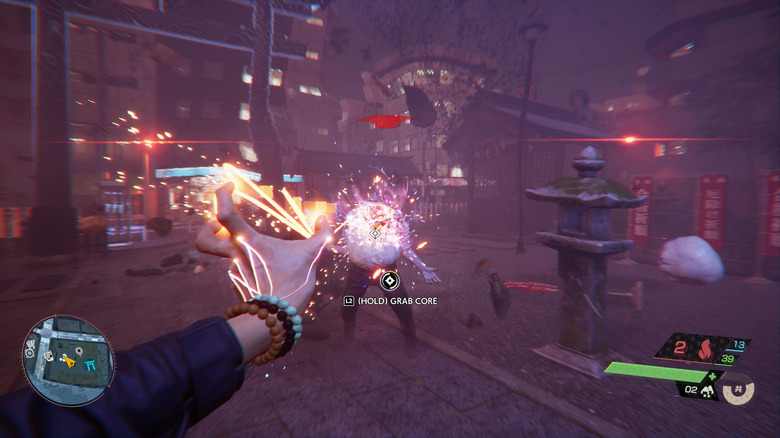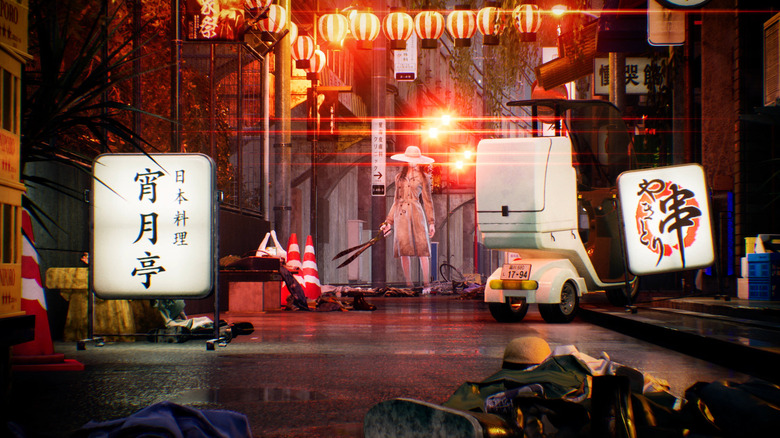Ghostwire: Tokyo Impressions - Not Your Typical Ghost Story
We're barely three months into 2022 and already PS5 owners have received two fantastic open world games. "Horizon Forbidden West" launched on PlayStation 5 on February 18 and it was followed just a week later by "Elden Ring." In nine months' time, both of those titles will almost certainly be in the conversation for game of the year but, even after those two bangers, the open-world train isn't stopping yet. PS5 owners (as well as those on PC) are getting another open-world adventure in the form of Tango Gameworks' "Ghostwire: Tokyo," which drops us in a haunted Tokyo where most human life has vanished.
Questions of how a PS5 owner is supposed to keep up with all these must-play games aside, there's certainly been no lack of options lately if you like open-world games. Of these three, it probably won't surprise anyone to learn that "Ghostwire: Tokyo" was the one that came out of left field for me. This is a new IP from what is essentially a niche Bethesda subsidiary: while Tango Gameworks' two "The Evil Within" games no doubt have their fans, the horror titles were never really mega hits. In other words, it would not be shocking to learn that "Ghostwire: Tokyo" is someone's first introduction to the studio.
"Ghostwire: Tokyo" wasn't on my radar until I had the chance to take an extended look at gameplay in a hands-off demo last month. While I'm not much for horror games, Tango's promise of an open-world Tokyo was definitely intriguing, as was the shift in focus to action-adventure rather than straight up survival horror. Tango gave me the chance to play "Ghostwire: Tokyo" early, but since I haven't finished the game, this won't be a full review. However, I have spent about 20 hours with it at the time of this writing, so here are my impressions of "Ghostwire: Tokyo" based on that playtime.
"Ghostwire: Tokyo" was tested on PS5 with a copy provided by Bethesda. Small story spoilers for "Ghostwire: Tokyo" are ahead.
Turning Tokyo into a ghost town
The story of "Ghostwire: Tokyo" picks up right away, as the game opens with a supernatural fog spreading through the streets of Tokyo and making everyone it touches vanish. The only exception to this seems to be the player character, Akito, who is saved when he's possessed by a spiritual entity named KK.
The attack on Japan has not only left the city empty, but in place of the city's human inhabitants are hostile ghosts called Visitors. KK's supernatural abilities not only keep Akito alive, but allow him to fight the otherworldly Visitors through magic powers called Ethereal Weaving. With Ethereal Weaving, players can harness wind, water, and fire to destroy the evil ghosts they encounter as they explore an empty, haunted Tokyo. "Ghostwire: Tokyo" tasks us with investigating the deadly fog, figuring out a way to bring everyone back, and confronting the masked individuals who are seemingly responsible for the whole mess.
The story is probably the one part of the game that I can't talk about in great detail, simply because I haven't finished it and don't have an indication of how close I am to the end. I will say that the story is at least reasonably engaging, as it feels like you're piecing together a mystery pretty much from the very start. Where I'm at in the game, basically everyone's motivation is still unclear, save for those of Akito, who states his priorities from the word "go." I'm interested in seeing where the story goes from here, and that isn't always a given in open-world games.
Tokyo takes center stage
Right away, the city was the most gripping thing about this "Ghostwire: Tokyo" to me. Tango's recreation of Tokyo looks incredible and is a lot of fun to explore.
What I love most about the world is the attention to detail. Since the fog that made everyone disappear rolled through the city quickly and without warning, you essentially get to see the city as if someone hit the pause button but you kept on moving. Cars are sitting in the middle of the street with their headlights on, and clothes lay in piles on the ground pretty much everywhere, indicating where a person was standing and sometimes even what they were doing when they vanished. From the street you can still hear music playing inside bars, while abandoned delivery carts dot the sidewalks and alleyways.
Tango succeeded in not just capturing the feel of a city where everyone but you had suddenly disappeared, but also in capturing the small details you would expect to see in what would normally be a bustling metropolis: down to details like signage in the window of a store that shows emergency information, or posters advertising specials.
Exploring the city is a lot of fun, and I would almost liken the experience to something like "Marvel's Spider-Man." You're not wall crawling or web swinging, but you are exploring the city for collectibles and power ups. There's even a verticality factor as Akito can grapple to mythical Tengu to get to the top of buildings. In fact, for a game where you're not playing Spider-Man, you sure do spend a lot of time scaling buildings and jumping from rooftop to rooftop.
An open-world game with a mythology lesson
Perhaps the coolest part about exploring "Ghostwire: Tokyo's" open-world is the frequent encounters you'll have with creatures and legends from Japanese mythology. As it turns out, when this supernatural takeover of Tokyo happened, it also confirmed that every aspect of Japanese mythology exists as well, whether we're talking about deceptive yokai or cucumber-loving kappa. It's not exaggerating to say that Japanese folklore permeates pretty much every aspect of this game. I think that only serves to elevate the experience.
Honestly, this game makes me wish I was more familiar with Japanese tradition and mythology. I think people who are aware of all of that will enjoy exploring "Ghostwire: Tokyo" a lot. I'm a big fan of the way "Ghostwire: Tokyo" pays homage to Japanese legends, and I think that will be much more appreciated by someone who is already familiar with these topics.
Combat starts clunky but gets progressively better
If there was one big question mark I had going into this game, it was combat. As I watched this hands-off preview last month, I noticed that combat seemed repetitive, as I only ever saw the player perform a few different attacks.
As it turns out, yes, combat can be somewhat repetitive, but it's not as bad as I was worried it was going to be. Ethereal Weaving allows players to attack with wind, fire, and water, which each have light and heavy attacks. Aside from those, players can also use a bow and arrow (though that has somewhat limited viability in combat with multiple enemies) and talismans that do a variety of things.
At first, the combat felt limited and clunky, and I think that'll be the case for a lot of people. As you get a cadence down, level up abilities, and start to encounter stronger enemies that can't just be spammed to death, it'll start to feel better. You'll start weaving fast wind attacks between slower, more powerful water and fire attacks, and then as you get more familiar with enemy attack patterns, you'll incorporate blocking and talismans with that as well. As you get deeper into the game, combat gets a lot more fluid and satisfying.
Graphics and performance impress
I played the PS5 version of "Ghostwire: Tokyo" and I spent most of time playing in the game's fidelity mode, which favors resolution over frame rate. I don't have many complaints about performance so far. The game looks beautiful in fidelity mode and is still very playable, even with the diminished frame rate.
I didn't encounter much in the way of bugs either. I've seen a few glitched textures, but not frequently. I've also encountered one case of glitched quest progression where I soft-locked myself and couldn't advance a story quest, but saving and reloading fixed that.
I'm usually pretty forgiving of bugs in open-world games (you have to be in order to get life out of "Skyrim" after 10 years), but "Ghostwire: Tokyo" seems to run well despite both its open-world design and its publisher. My one critique about the graphics is that sometimes the character models seem a little wooden in cutscenes, but that's the only real graphics flaw I can think of.
Yeah but is it scary?
As I stated at the outset, this is something of a departure for Tango Gameworks because it's not a straight survival horror game, but that doesn't mean "Ghostwire: Tokyo" isn't scary. I haven't played either "Evil Within" game so I can't really contrast with Tango's previous work, but "Ghostwire: Tokyo" definitely still has horror elements to it.
Are those elements overt? Not really. Most of the time, "Ghostwire: Tokyo" is more creepy or unsettling than it is outright scary. There are some jump scares, but more often than not, "Ghostwire: Tokyo" prefers to build tension through creepy imagery or unnerving storytelling.
I'm not what you would call a horror fan so my opinion may not be the most informed, but it feels that most of "Ghostwire: Tokyo's" horror is fairly mild. Don't get wrong, there are still scary and intense moments that are really good at filling you with a sense of dread, but often those are spread out and split up by more lighthearted side quests or action segments. It's not enough to get me, someone who tends to avoid horror, to want to stop playing, if that helps put it in perspective.
At any rate, this probably isn't suitable for young kids, even those who are already used to playing more mature games.
Don't ignore the side quests
In the lead up to release, there's been at least some suggestion that Tango gave particular focus to "Ghostwire: Tokyo's" side quests, and I can see that work playing through the game. In the time I've spent with "Ghostwire: Tokyo," I've done a number of side quests and I've enjoyed a lot of them. You'll receive side quests from disembodied spirits who are bound to Tokyo for one reason or another and can't move on. Typically, they're bound because a malicious specter is holding them here, but that isn't always the reason.
What I like most about side quests is that many of them aren't long and drawn out, like we might expect in open-world games. They're usually quick and breezy, which means that knocking out of a few on your way to the next main story quest is no problem. The ones I've encountered aren't simple fetch quests either, so that's nice to see. Each feels like a self-contained story, and many of them dive deeper into Japanese folklore, so it pays to spend some time on a detour as they pop up while you're playing.
Ghostwire: Tokyo impressions final thoughts
All in all, I'm having a lot more fun with "Ghostwire: Tokyo" than I expected to at the outset, especially as someone who has an aversion to horror. If I had to slot "Ghostwire: Tokyo" into a genre, I'd say it's probably more an action-adventure thriller than a survival horror game. "Ghostwire: Tokyo" is very good at building suspense and anxiety in both its main quest and its various sidequests, but instead of trying to fit "Ghostwire: Tokyo" into a genre when that fit may not be perfect, I'll just settle for describing it as a spooky open-world game steeped in Japanese folklore.
I'm impressed by what Tango Gameworks has managed to do with this game. I think the open-world Tokyo that Tango has put together is very impressive, and while it still has some of the typical drawbacks of an open-world city — you can't go in many of the buildings you'll come across, for instance — there are still plenty of secrets to be discovered.
I don't want to make a value judgment since this isn't a review, particularly because I don't know where the story goes from the point I'm at. However, hopefully my impressions help those who may be on the fence regarding this game make a decision about whether it's the right one for them. Given the recent glut of solid open-world releases for the PS5, I'm guessing that a lot of people will be forced to wait on "Ghostwire: Tokyo" for a little while, but fans of Japanese folklore, open-world gaming in general, and those who want atmospheric, spooky experience should give it a look when on the prowl for something new to play.
